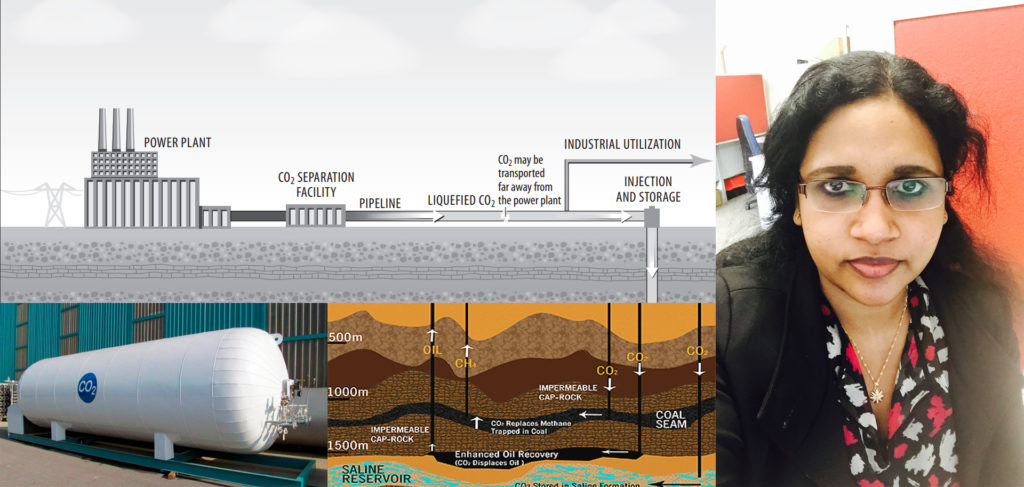Carbon Sequestration: are Deep Coal Seams the Answer?
 Dr Samintha Perera
Dr Samintha Perera
Winner, 2016 Phillip Law Postdoctoral Prize for the Physical Sciences
Lecturer in Geomechanics
Department of Infrastructure Engineering
The University of Melbourne
The ever-increasing use of fossil fuels in energy generation has created a crisis in the Earth’s climate systems through significantly increasing the release of carbon dioxide (CO2) into the atmosphere, a major contributor to rapid global warming. Among many of the urgent measures being explored to mitigate the ongoing discharge of CO2 from industrial sources is the capture and storage of this ‘greenhouse gas’ through a process known as carbon sequestration.
Among the various CO2 storage options, sequestration in deep, un-minable coal seams is currently attracting worldwide attention from the scientific community. This approach has unique advantages over other options due to its appealing capacity to enhance coal seam gas production and extraction, which can potentially offset the costs of sequestration. However, the effectiveness of deep coal seams as an option for carbon storage needs to be counterbalanced with the high risks associated with this process before moving to a large scale field application.
The deep coals seams ideal for CO2 storage are located at depths of more than one kilometre. The high pressure and temperature conditions existing at these depths cause injected CO2 to be converted into its super-critical, highly chemically-reactive state, which in turn generates a significant swelling in the coal mass with a subsequent, significant decline in the CO2 flow ability, meaning further injections of CO2 will be compromised. Further, the significant strength reduction in seams absorbing an injection of CO2 may cause the gas to instead leak out into the atmosphere, with a chance of dangerous outbursts. While a simultaneous injection of nitrogen can mitigate this latter risk, there are no indications of any process that can avoid the significant swelling of coal mass created by injections of CO2.
About the speaker:
Dr Samintha Perera is the 2016 winner of the Royal Society of Victoria’s Phillip Law Postdoctoral Prize for the Physical Sciences. Her research specialisations and interests incorporate rock mechanics, coal mining and “slop stability,” CO2 sequestration and unconventional oil and gas extractions. To date, Dr Perera has over 60 publications in highly regarded international journals and monographs and is an associate editor of International Journals of Natural Gas Science and Engineering and Geomechanics and Geophysics for Geo-Energy and Geo-Resources. She has recently been appointed as a Lecturer in Geomechanics with the Department of Infrastructure Engineering at the University of Melbourne.








